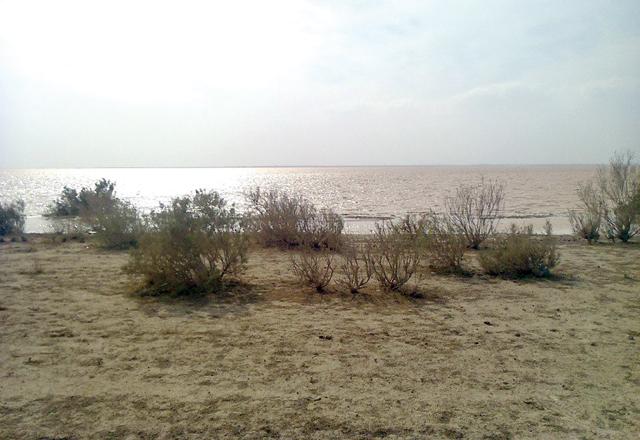You are here
RSCN to develop eco-tourism, income generating projects at Azraq mudflat
By Hana Namrouqa - Jan 24,2017 - Last updated at Jan 24,2017
AMMAN — Eco-tourism and sustainable income generating projects will be developed at Azraq’s mudflat, which was recently added to the Azraq Wetland Reserve, the Royal Society for the Conservation of Nature (RSCN) said on Tuesday.
The sustainable projects will be implemented at the mudflat, locally referred to as Al Qaa, after the Cabinet on Sunday approved the expansion of the boundaries of the wetland reserve to include it.
Al Qaa is a 62-kilometre seasonal lake that forms during winter when rainwater from the mountains of Jordan, Saudi Arabia and Syria flows to the lowest part of Azraq basin. The water of the seasonal lake dries up by summer, leaving thick layers of salt.
The Cabinet decision to allow expanding the wetland reserve to include Al Qaa was issued provided that salt extraction activities by Azraq’s local community from Al Qaa are maintained.
In 1977, the Ramsar Convention declared Azraq wetland, around 100km east of Amman, and the adjacent mudflat as a major station for migratory birds on the African-Eurasian flyway, as a variety of birds flock to the reserve each year, stopping for a short rest along their migration routes, staying for the winter, or breeding within the wetland, according to the RSCN.
RSCN Director General Yehya Khaled said Al Qaa is an important site for migratory birds, and adding it to the boundaries of the wetland reserve will improve efforts of preserving the vital ecosystems of the wetland.
In addition, Al Qaa plays a major role in recharging Al Azraq Basin aquifer, Khaled said.
“Bird watching and different eco-tourism projects will be developed at Al Qaa,” he told The Jordan Times.
Highlighting that the local community has abandoned salt extraction from Al Qaa, Khaled said that any future activities in that direction will not cause damage to the ecosystem.
Spread over 75 square kilometres before adding Al Qaa to its borders, the wetland reserve is home to marshlands, natural pools and streams that attract thousands of birds each year.
The wetland receives its water from the Azraq joint basin, 94 per cent of which is located in Jordan, 5 per cent in Syria and 1 per cent in Saudi Arabia. The wetland is fed by three main springs that produce 20 million cubic metres (mcm) each year, according to ecologists.
Supplying Amman with 17mcm of potable water annually and 43mcm for irrigation, the basin is showing signs of salinity and depletion, a study released by the International Union for the Conservation of Nature has indicated.
The excessive extraction of water from the wetland, which started in 1980, has caused water levels to drop by 12-15 metres below the surface, leaving only 0.04 per cent of the marshland that was once rich with flora and fauna, according to experts.
Related Articles
AMMAN — Unprecedented winter floods turned Azraq’s mudflat, locally referred to as Al Qaa, into a lake in the middle of the Kingdom’s easter
AMMAN — The rehabilitation of the Azraq Wetland Reserve and the pumping of water to different parts of the oasis have diversified the bird s
AMMAN — Visitors to Azraq Wetland Reserve, one of Jordan’s oldest natural sanctuaries, this summer will have the chance to explore the wild














